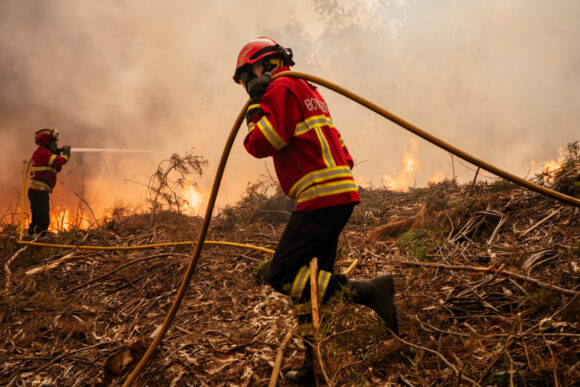The seemingly unstoppable rise of catastrophe bonds may now be eroding the market share of reinsurers.
After years of raising prices, reinsurers are finding that primary insurers have started relying less on them and more on a niche bond market designed as a backstop for only the most extreme disaster scenarios. According to estimates provided by Barclays Research, primary insurers now sponsor 58% of all cat bonds, up from 48% two years ago.
The upshot is that reinsurers face new market dynamics, with catastrophe bonds appearing to play an “important” role in that shift, said Ivan Bokhmat, European insurance analyst at Barclays.
Reinsurers are still the dominant providers of cover for primary insurers. But an ever larger share of what they do is moving over to alternative investment managers chasing double-digit returns on secondary markets.
Insurers’ growing reliance on capital markets coincides with a steep rise in costs triggered by natural catastrophes. Industry losses tied to extreme weather events are set to exceed $150 billion this year, which is well above the historical average, according to risk modeler Verisk. Since 2023, meanwhile, the market for so-called cat bonds has grown by well over 50% to $55 billion, estimates provided by insurance broker Aon Plc show.
Buyers of cat bonds can face deep losses if a pre-defined catastrophic event occurs, but face sizable returns if it doesn’t. The bonds sailed through last year’s hurricane season without any payouts of note, in part as fund managers use increasingly sophisticated models to assess the terms of the bonds they buy.
In 2022, when Hurricane Ian devastated large parts of the US east coast, the Swiss Re Global Cat Bond Performance Index only lost about 2%. This year, the index is up about 10%, after delivering record gains since 2023. But capital markets investors may quickly retreat if catastrophe bonds stop performing, with Barclays cautioning that returns to date have been aided by “a clear element of luck.”
With investor interest still on the rise for now, issuers of cat bonds are seizing the moment. In recent years, cat-bond issuance has set a record, and is on track to do so again in 2025. Maggie O’Neal, head of sustainable investing research at Barclays, notes that the pace of cat bond issuance is clearly picking up, with the growth rate since 2023 roughly equivalent to what previously would have taken half a decade to achieve.
The speed of the expansion has put pressure on reinsurance rates, with “clear signs of price correction,” Barclays said.
The development speaks to the “continued disintermediation of the risk transfer market away from traditional reinsurers towards capital markets,” according to the bank. That implies “further dilution of reinsurer returns across business lines,” it said. Barclays notes that as reinsurers see their market dominance diminished, they’re being forced to lower prices.
Against that backdrop, some reinsurers are stepping up their presence in the market for cat bonds, not just as issuers but also as investment managers. Swiss Re, which this year took over a GAM Holding AG portfolio of cat bonds from hedge fund Fermat Capital Management, says that capital market instruments represent “an important and complementary part” of its business.
As a large issuer of cat bonds, “our focus is on delivering the most effective and efficient risk transfer solutions for our clients,” a spokesperson for Swiss Re said by email. “Both capital markets and traditional reinsurance can work together to help build resilience against natural catastrophes.”
Photograph: Fire fighters battle wildfires in Portugual; photo credit: Jose Sarmento Matos/Bloomberg
Topics Catastrophe Reinsurance
Was this article valuable?
Here are more articles you may enjoy.



 Poorer Americans Dropped Federal Flood Insurance When Rates Rose
Poorer Americans Dropped Federal Flood Insurance When Rates Rose  WTW to Acquire Newfront in Deal Worth Up to $1.3B
WTW to Acquire Newfront in Deal Worth Up to $1.3B  Viewpoint: Artificial Intelligence Is Rewriting the Rules for Commercial Lines
Viewpoint: Artificial Intelligence Is Rewriting the Rules for Commercial Lines  Catastrophe Bonds Linked to Wildfires Lose ‘Untouchable’ Status
Catastrophe Bonds Linked to Wildfires Lose ‘Untouchable’ Status 

